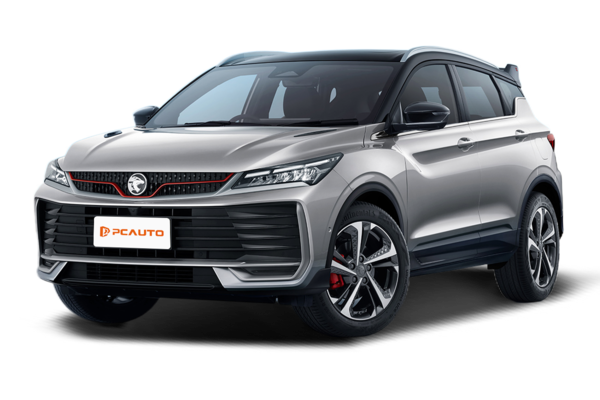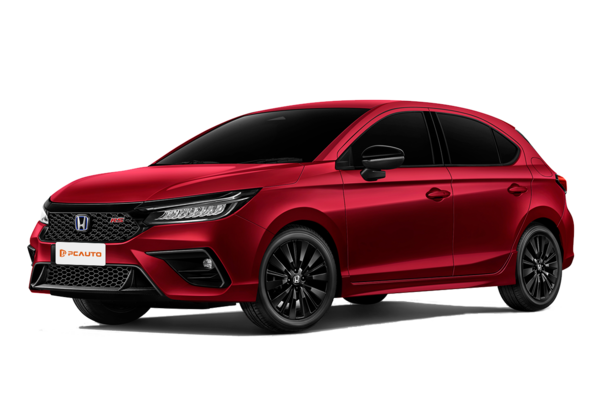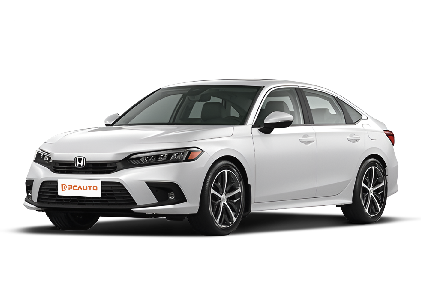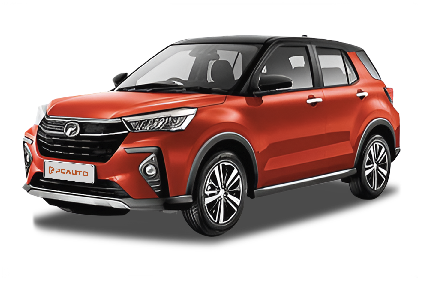Q
what is c segment car
In Malaysia's car market, the C-Segment refers to mid-size sedans or SUVs, typically ranging from 4.3 to 4.6 meters in length. Slotted between the budget-friendly B-Segment and the more upscale D-Segment, these rides are perfect for families or folks craving a bit more comfort. Big hitters here include the Toyota Corolla, Honda Civic, and Mazda 3 – all rounding out nicely in terms of space, power, and features. They usually pack 1.5L to 2.0L engines, striking a solid balance between fuel efficiency and performance, with some even offering hybrid options to tick both practicality and eco-friendly boxes for Malaysian buyers.
Safety-wise, C-Segment models often come loaded with advanced tech like automatic emergency braking and lane-keeping assist. With prices hovering between RM100k to RM150k, they’re the go-to upgrade for families with a bit more budget to spare. Competition in this segment is fierce, too – brands battle it out with snappy designs, cutting-edge tech, and after-sales service to win over buyers. At the end of the day, it all comes down to brand preference and what you really need from your car.
Special Disclaimer: This content is published by users and does not represent the views or position of PCauto.
Popular Models
Related Q&A
Q
What is E85 fuel?
E85 fuel is a type of flex-fuel, mainly composed of a mixture of ethanol and gasoline, with the ethanol content reaching up to 85% and gasoline accounting for 15%. In practical applications, the proportion of ethanol may fluctuate between 51% and 83% due to factors such as geographical location and season. It is suitable for flexible fuel vehicles (FFVs), whose electronic management systems can automatically adjust operating parameters according to the actual proportion of fuel in the tank to ensure that vehicle performance is not affected. As a fuel type related to renewable energy, E85 plays a transitional role in the energy transition process. It can not only reduce dependence on traditional fossil fuels but also adapt to some existing transportation infrastructure, providing a flexible option for the transition from traditional fuels to cleaner energy sources.
Q
How many types of fuel for cars?
In the local area, the main types of fuel commonly used for cars are two kinds of unleaded gasoline: RON95 and RON97. RON95 is the most popular and economical choice, with an affordable price and wide availability. It can meet the daily driving needs of most ordinary models (such as the 2019 Kia Cerato and 2020 Volkswagen Passat). It complies with the MS228 national fuel standard, and the cleaning additives it contains can effectively maintain the cleanliness of the fuel injection system and combustion chamber. RON97 has a higher octane rating, making it suitable for high-performance models or use under high-load conditions. It optimizes the engine's anti-knock performance, and occasional use can also deliver smoother power output, but its cost is significantly higher than RON95. All local gasoline must meet EURO 4M or higher standards, eliminating the need for additional fuel additives. Furthermore, due to the floating fuel price mechanism, the prices of both gasoline types fluctuate with market conditions, allowing car owners to select the appropriate fuel based on vehicle requirements and usage needs.
Q
Is rpm the same as horsepower?
RPM (Revolutions Per Minute) and horsepower are not the same concept. RPM refers to the number of rotations an engine makes per minute and is a unit for measuring engine speed; horsepower (HP), on the other hand, is a unit of power for measuring an engine's work capacity. The two are closely related. The calculation of horsepower requires combining torque and RPM, for example, using the formula: horsepower = torque × RPM ÷ 5252 (imperial conversion) or ÷ 9549 (metric conversion). Higher RPM generally enables an engine to produce more horsepower, but the actual output also depends on parameters such as torque, and the engine's horsepower performance varies across different RPM ranges.
Q
What is the rpm of a 0.5 hp motor?
The rotation speed of a 0.5 hp motor is not a fixed value; it depends on the motor type, number of pole pairs, and application scenario. In AC asynchronous motors commonly used in Malaysia, the rotation speed is closely related to the power supply frequency and the number of pole pairs. Malaysia's power supply frequency is 50 Hz, and the synchronous speed is calculated by the formula n = 60f/p (where f is the frequency and p is the number of pole pairs). For example, the synchronous speed of a 2-pole asynchronous motor is 3000 rpm, and the actual operating speed is slightly lower due to the slip, approximately 2800-2900 rpm; the synchronous speed of a 4-pole motor is 1500 rpm, with an actual speed of about 1400-1450 rpm; and a 6-pole motor has a synchronous speed of 1000 rpm, with an actual speed of around 950-980 rpm. In the Malaysian market, 0.5 hp motors are widely used in small household water pumps, fans, or small industrial equipment. Different brands (including local brands and models sold in Malaysia by international brands) offer products with different numbers of pole pairs according to requirements. Users need to choose based on the application: for high-speed requirements (such as some ventilation fans), 2-pole motors can be selected; for medium-speed and high-torque requirements (such as small water supply pumps), 4-pole motors are suitable; and for low-speed and high-torque scenarios, 6-pole motors can be chosen. When purchasing, users can confirm whether the rated speed marked on the motor nameplate matches the specific usage requirements.
Q
How to calculate rpm of motor?
The calculation method of motor speed varies depending on the type of motor. For synchronous motors, their speed is directly related to the power supply frequency and the number of pole pairs, with the calculation formula being n = (60×f)/p, where n represents the speed (in rpm, i.e., revolutions per minute), f is the power supply frequency (in Hz), and p is the number of pole pairs of the motor (the number of pole pairs is equal to the number of poles divided by 2). The actual speed of an asynchronous motor is lower than the synchronous speed, so the slip ratio needs to be introduced for calculation, with the formula n = (60×f/p)×(1 - s), where s is the slip ratio (usually expressed as a decimal, generally between 0.01 and 0.05 at full load). The speed calculation formula for a DC motor is n = (U - Iₐ×Rₐ)/(Cₑ×Φ), where U is the armature voltage, Iₐ is the armature current, Rₐ is the armature circuit resistance, Cₑ is the motor constant, and Φ is the flux per pole. For example, if the power supply frequency is 50 Hz and the number of pole pairs is 2, the speed of the synchronous motor is 60×50÷2 = 1500 rpm; if it is an asynchronous motor with a slip ratio of 0.03, the actual speed is 1500×(1 - 0.03) = 1455 rpm. Mastering these calculation formulas helps to understand the working principle of motors, evaluate their performance and energy consumption, thereby selecting and applying motors more reasonably.
Q
Is RPM related to HP?
RPM (revolutions per minute) and HP (horsepower) are directly linked because horsepower is calculated using torque and engine speed. The formula is HP = (Torque × RPM) ÷ 5252, meaning at the same torque level, higher RPM results in greater horsepower.
Engine performance curves typically show how horsepower and torque change across the RPM range. Naturally aspirated engines usually hit peak horsepower at higher RPMs, while turbocharged engines often deliver max horsepower at lower RPMs—thanks to forced induction improving low-end torque.
Understanding this helps when choosing or modifying a car. If you enjoy high-revving driving, a naturally aspirated engine might be your pick. But if you prioritize low-RPM grunt for daily driving, turbocharged models are better suited.
Also, transmission gear ratios play a role in how well the engine stays in its optimal RPM range, balancing power delivery and fuel efficiency. Getting the ratios right means better throttle response and mileage.
Q
What is the RPM of 10 hp?
The RPM range of a 10-horsepower engine depends on its type and application. For instance, a single-cylinder diesel engine in small generators or farm equipment might run between 1,800 and 3,600 RPM, while a high-revving motorcycle engine could exceed 8,000 RPM.
The relationship between power and RPM is determined by torque, calculated as: **Horsepower = Torque (Nm) × RPM ÷ 5,252**. This means a low-RPM engine needs higher torque to achieve the same power output, whereas a high-RPM engine produces less torque.
In everyday cars, idle speeds typically sit at 700–900 RPM, with full-throttle operation reaching over 6,000 RPM—though those engines are far more powerful than 10 hp. For small equipment, RPM selection balances efficiency and durability. Pumps or lawnmowers often use fixed-speed designs for better fuel economy, while construction gear may adjust RPM to match load demands.
For exact specs, always check the engine’s nameplate or manual—factors like air/liquid cooling or two-/four-stroke design significantly impact performance.
Q
What is the maximum hp of a car?
The current production car horsepower record is held by elite hypercar brands. Take the Bugatti Chiron Super Sport 300+ – its monstrous 8.0-liter W16 quad-turbo engine churns out 1,600 horsepower. Then there's the Koenigsegg Jesko Absolut, whose 5.0-liter V8 twin-turbo pushes 1,623 ponies when running on E85 biofuel. These extreme machines use every trick in the book: featherlight carbon fiber bodies, cutting-edge aerodynamics, and multi-turbo systems to chase those insane numbers.
But let's be real – horsepower isn't everything. Torque, drivetrain efficiency, weight, and chassis tuning matter just as much. For daily driving? A modest 200-300 hp in your average family sedan is plenty. Even performance cars in the 400-600 hp range will satisfy most speed cravings.
What's interesting is how hybrid tech is changing the game. Many modern performance cars now use electric motors to boost power while keeping efficiency somewhat reasonable. My advice? Match the horsepower to your actual needs – no point paying at the pump for power you'll never use.
Q
Can a car have 800 horsepower?
Sure thing. Right now, there are quite a few high-performance cars on the market pushing 800 horsepower or even more. These beasts usually fall into the supercar or heavily modified performance car category—think flagship models from top-tier brands or professionally tuned builds. They achieve that insane power through massive engines, turbocharging, or hybrid systems.
An 800-horsepower car is brutally quick, often hitting 0-100 km/h in under 3 seconds, but it also demands serious skill to handle, not to mention upgraded cooling and braking systems. Keep in mind, though, that this much power isn’t exactly practical for daily driving—it’s more at home on a track or special occasions. Local factors like fuel quality, road conditions, and legal restrictions also come into play.
If you’re into high-performance machines, follow expert auto media or test-drive events to experience them firsthand. Just remember to pick a car that actually suits your needs—not just the numbers on paper.
Q
What should my RPM be at 100?
When you're cruising at 100 km/h, your engine's RPM depends on several factors like transmission type, engine displacement, and gear ratios.
With a manual transmission in top gear (usually 5th or 6th), you might see the tachometer sitting between 2,500 and 3,500 RPM. Automatic transmissions, on the other hand, tend to keep revs lower—around 2,000 to 3,000 RPM—thanks to their adaptive tuning for better fuel efficiency.
Smaller turbocharged engines may run slightly higher RPMs, while larger naturally aspirated engines often maintain lower revs at the same speed. Other variables like vehicle load, road incline, and driving mode (sport vs. eco) also play a role.
Keeping RPMs in the right range during highway driving not only saves fuel but also reduces engine wear. If you notice unusually high or low revs at speed, it’s worth checking transmission fluid, clutch health, or sensors to avoid long-term issues.
Popular Cars
Model Year
Car Compare
Car Photo
Latest Q&A
Q
What exactly is fuel?
Fuel refers to substances that can release their stored energy through chemical reactions (such as combustion) or nuclear reactions. It is widely used in scenarios like power generation, transportation, industrial production, and daily life, providing thermal energy, mechanical energy, or electrical energy support for various equipment and systems. Classified by physical state, fuel can be divided into three categories: solid (e.g., coal, wood, biomass fuel), liquid (e.g., gasoline, diesel, biodiesel), and gas (e.g., natural gas, hydrogen, liquefied petroleum gas); classified by source, it can be divided into fossil fuels (e.g., coal, oil, natural gas) and renewable fuels (e.g., biomass fuel, ethanol, etc.), in addition to nuclear fuels (e.g., uranium, plutonium) that can release nuclear energy. In the automotive field, gasoline and diesel are currently the most commonly used conventional fuels, suitable for spark-ignition and compression-ignition engines respectively; meanwhile, alternative fuels such as compressed natural gas (CNG), liquefied petroleum gas (LPG), biodiesel, and ethanol are gradually being applied in automotive power systems due to their advantages in environmental protection or renewability, to meet different energy needs and environmental requirements.
Q
What is gas vs petrol?
Actually, gas (short for gasoline in American English) and petrol (a term used in British English) essentially refer to the same fuel—gasoline. Both are flammable liquids refined from crude oil and used in spark-ignition internal combustion engines. They share identical core components and functions, differing only in terminology due to regional linguistic conventions.
In the local market, the primary gasoline variants are RON95 and RON97. RON95, being more affordable due to government subsidies, serves as the recommended fuel for most vehicle models (such as the Jaecoo J7 SUV). The 1.6TGDI turbocharged engine equipped in these models is specifically calibrated to leverage RON95's anti-knock properties, delivering 156 horsepower while optimizing fuel efficiency—making it ideal for local hilly terrains and congested urban roads. RON97, with its higher octane rating, offers superior anti-knock performance but at a comparatively elevated cost.
Octane rating serves as the critical metric for evaluating gasoline's anti-knock capability. Vehicle owners should adhere to the engine compression ratio specified in their owner's manual when selecting the appropriate fuel grade, thereby preventing diminished engine performance or accelerated wear. Furthermore, local motorists should prioritize reputable gas stations to mitigate risks posed by substandard gasoline to the fuel system. The use of OEM-recommended fuel additives can also help maintain injector cleanliness, preserving both vehicle performance and longevity.
Q
What are the four types of fuel?
The four common types of fuel include solid fuels, liquid fuels, gaseous fuels, and nuclear fuels. Solid fuels such as coal and coke can release a large amount of thermal energy when burned, and are often used in thermal power generation or industrial heating scenarios; liquid fuels like gasoline and diesel, refined through petroleum processing, are the main power sources for transportation tools such as cars and trucks; gaseous fuels such as natural gas and liquefied petroleum gas (LPG) have a clean and efficient combustion process, and are widely used in household cooking, heating, and industrial production equipment; nuclear fuels like uranium-235 and plutonium-239 release energy through nuclear reactions, which is used in nuclear power generation, featuring high energy density and no direct greenhouse gas emissions. These fuels play key energy supply roles in different fields, meeting the diverse energy needs for power generation, transportation, industrial manufacturing, and daily life.
Q
Is fuel called gas?
In Malaysia, different types of fuels have different names. Gasoline (used in spark-ignition internal combustion engines such as passenger cars and motorcycles) is usually called "petrol" (in English) or "minyak petrol" (in Malay) instead of "gas"; while fuels like liquefied petroleum gas (LPG) are sometimes abbreviated as "gas". Common gasoline variants in Malaysia include RON95 and RON97. Among them, RON95 is more affordable due to government subsidies. In April 2024, the price of RON95 was approximately $0.43 per liter, and RON97 was about $0.73 per liter. Gasoline is produced through the fractional distillation of crude oil, with various additives added to enhance chemical stability, control corrosion, and clean the fuel system. Some gasoline also contains components such as ethanol to improve combustion efficiency.
Q
Is LPG a fuel gas?
Yes, liquefied petroleum gas (LPG) is a type of fuel gas. It is mainly composed of propane and butane, with some products containing small amounts of propylene and butylene. It is derived from the petroleum refining process or volatile gases from natural gas extraction. LPG is a gas at normal temperature and pressure, but can be liquefied into liquid form through pressurization or low-temperature treatment for easy storage and transportation, and is released as a gas when used. It has a wide range of uses, including as fuel for automobiles (especially suitable for light vehicles), domestic cooking fuel, industrial heating fuel, etc., and is also an important petrochemical raw material. Compared with traditional fuels, LPG has advantages such as less pollution (no dust residue after combustion), high calorific value (about twice that of coal per unit weight), convenient transportation, and stable supply pressure. However, due to its flammable nature, strict compliance with safety operation regulations is required during use to avoid safety risks caused by leakage.
View MoreLatest News

Chery Tiggo 7 PHEV and iCaur V23 earn ASEAN NCAP five-star safety rating
RobertDec 25, 2025

Wuling Bingo EV 2025 model launched in Malaysia, adding a strong contender to the entry-level pure electric market
AshleyDec 25, 2025

Tax exemption policy is coming to an end, Malaysia's electric vehicle registrations in November increased by 25% month-on-month to 5,417 units
Kevin WongDec 25, 2025

For safety reasons, the Chinese government may ban fully concealed door handle designs
MichaelDec 24, 2025

"Consumer Reports" Used Car Reliability Rankings Released: Lexus and Toyota Perform Steadily, Continue to Lead
AshleyDec 24, 2025
View More




 Cars
Cars















